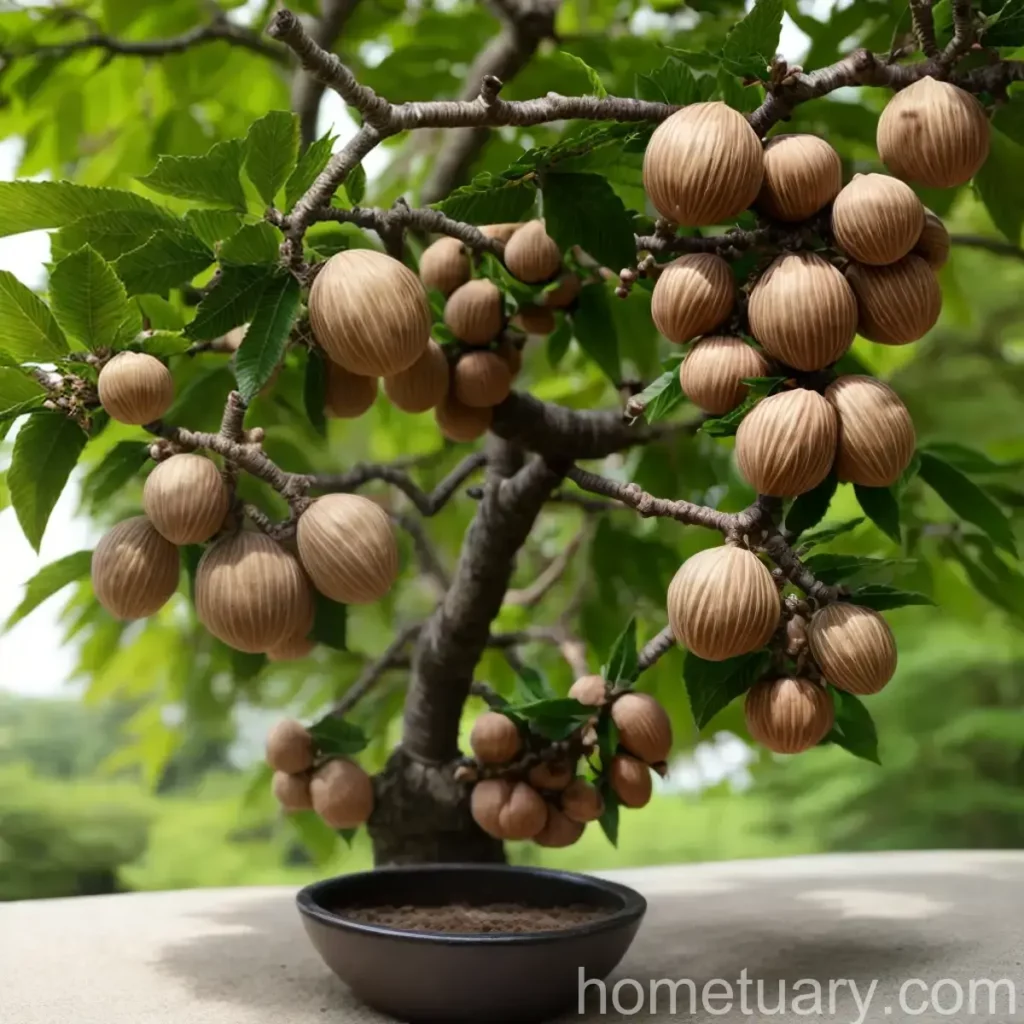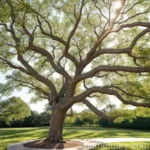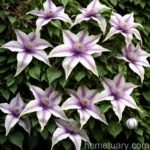The Fascinating World of Japanese Chestnut (Castanea crenata)
Plant Name: Japanese chestnut (Castanea crenata)
What is Plant: Japanese Chestnut (Castanea crenata)?
Japanese chestnut, scientifically known as Castanea crenata, is a species of chestnut native to Japan and South Korea. This deciduous tree is known for its delicious and nutritious nuts, and it holds cultural significance in many regions. Japanese chestnut trees can grow up to 20-30 meters in height and are valued not only for their nuts but also for their ornamental beauty, making them an excellent choice for both agricultural and landscaping purposes.
Key Takeaways – Japanese Chestnut (Castanea crenata)
Here are the key takeaways and essential information regarding Japanese chestnut (Castanea crenata) that we will explore in this comprehensive guide:
- Cultural Significance: Understand the cultural and traditional importance of Japanese chestnut.
- Uses: Explore the various purposes of Japanese chestnut, including culinary, medicinal, and landscape design.
- Cultivation Requirements: Learn about the specific water, sunlight, fertilizer, soil, and pruning needs for Japanese chestnut trees.
- Propagation and Container Growing: Discover the best practices for propagating and growing Japanese chestnuts in containers.
- Common Diseases and Pests: Identify the prevalent diseases and pests that affect Japanese chestnut trees and methods for diagnosis and management.
Now, let’s delve deeper into the world of Japanese chestnut and explore its unique characteristics, growth requirements, uses, and much more in detail.
Culture
Japanese chestnuts have been deeply rooted in the culture and traditions of Japan and South Korea for centuries. The nuts, known as kuri in Japanese, hold a significant place in the culinary traditions of both countries. They are often used in various traditional dishes, confections, and are even enjoyed roasted as a popular street snack during the autumn season.
Beyond culinary uses, Japanese chestnut trees are also revered for their aesthetic appeal. The vibrant autumn foliage of the trees, celebrated for its beautiful shades of red, orange, and yellow, holds cultural significance and is an iconic symbol of the season.
Japanese chestnuts are also associated with certain folklore and symbolism in these regions, and they are known to represent abundance, longevity, and prosperity. Additionally, they have been traditionally used in folk medicine and have garnered a place in various cultural stories and traditions.
Uses
Culinary Uses
Japanese chestnuts are highly prized for their culinary applications. Their rich, flavorful nuts are utilized in numerous traditional dishes, desserts, and snacks. They can be enjoyed in both sweet and savory dishes, adding a delightful nutty taste and texture. Roasted Japanese chestnuts are a popular autumn street food, enjoyed for their warm, earthy flavors.
The nuts can also be ground into a sweet paste or flour for making delicious confections such as kuri kinton (sweet chestnut paste) and kuri manju (steamed buns with chestnut filling). Furthermore, they are often included in various rice and noodle dishes, adding a unique depth of flavor to the cuisine.
Medicinal and Nutritional Benefits
In addition to their culinary uses, Japanese chestnuts offer various nutritional benefits. They are a good source of vitamins, minerals, and dietary fiber. The nuts are known for their high levels of vitamin C, potassium, and antioxidants, making them a valuable addition to a healthy diet.
In traditional medicine, Japanese chestnuts have been used for their medicinal properties. They are believed to have beneficial effects on digestion, and different parts of the tree have been used in herbal remedies for various ailments.
Landscape and Ornamental Value
The Japanese chestnut tree is valued not only for its delectable nuts but also for its ornamental beauty. The tree’s elegant form and lush foliage make it a popular choice for landscaping and as an ornamental shade tree in gardens and parks. The vibrant autumn colors of the foliage make it a standout feature in the seasonal landscape.
Water
Proper water management is crucial for the health and growth of Japanese chestnut trees. While they need regular watering, it is essential to ensure good drainage to prevent waterlogging, which can lead to root rot and other problems.
Watering Requirements
- Young Trees: Newly planted Japanese chestnut trees require regular watering to establish a strong root system. Keep the soil consistently moist, but not waterlogged, during the initial growth phase.
- Mature Trees: Mature Japanese chestnut trees generally have good drought tolerance once established. However, during extended dry periods, they benefit from deep watering to reach the deeper roots effectively.
Watering Tips
- Irrigation: Consider using drip irrigation or a soaker hose to provide a slow, steady supply of water directly to the root zone.
- Mulching: Applying a layer of organic mulch around the base of the tree helps to retain soil moisture and reduce evaporation.
Ensuring adequate water supply, especially during the critical growth stages, is essential for the healthy development of Japanese chestnut trees.
Sunlight
Japanese chestnut trees thrive in full sun to partial shade, requiring at least six hours of direct sunlight each day for optimal growth and nut production.
Sunlight Requirements
- Full Sun: Provide a location with full sun exposure, particularly in cooler regions, to facilitate robust growth and ensure maximum nut production.
- Partial Shade: In warmer climates, partial shade during the hottest part of the day can help protect the tree from intense heat and sun damage.
Sunlight Tips
- Site Selection: When planting Japanese chestnut trees, choose a sunny location with well-drained soil and ample space for the tree to spread its canopy.
By providing the right balance of sunlight and shade, you can promote healthy foliage, flower development, and a bountiful harvest of Japanese chestnuts.
Fertilizer
Applying the appropriate fertilizer at the right times is essential for the overall health and productivity of Japanese chestnut trees.
Fertilization Schedule
- Spring: Apply a balanced, slow-release fertilizer in early spring as the tree begins to break dormancy. This provides the necessary nutrients to support new growth and flower development.
- Summer: If necessary, a light application of nitrogen-rich fertilizer can be beneficial in mid-summer to bolster the tree’s vigor.
- Fall: A final application of fertilizer in late fall can help replenish essential nutrients used during the growing season and support root development.
Fertilizer Tips
- Soil Testing: Conduct a soil test to determine the specific nutrient needs of the planting site and adjust the fertilizer application accordingly.
- Organic Options: Consider using organic fertilizers, such as compost or well-aged manure, to enrich the soil and promote long-term soil health.
Proper fertilization practices contribute to the overall vitality, growth, and nut production of Japanese chestnut trees.
Soil
Japanese chestnut trees thrive in well-drained, slightly acidic soils with good fertility. The right soil conditions are crucial for ensuring healthy root development and optimal nut production.
Soil Requirements
- Well-Drained: Plant Japanese chestnut trees in well-drained soil to prevent waterlogging, which could lead to root rot and other issues.
- Slightly Acidic pH: The ideal soil pH for Japanese chestnut trees ranges from 5.5 to 6.5. Acidic soils promote nutrient availability and support healthy growth.
- Fertile and Loamy: Rich, loamy soils with good fertility provide an excellent growing medium for Japanese chestnut trees.
Soil Preparation
- Amendments: Incorporate organic matter, such as compost or well-rotted manure, into the soil when planting to improve its structure and fertility.
- Mulching: Apply a layer of organic mulch around the base of the tree to retain soil moisture, regulate temperature, and suppress weed growth.
By ensuring proper soil conditions, you can create an optimal growing environment for Japanese chestnut trees and promote their long-term health and productivity.
Pruning
Pruning is an essential aspect of Japanese chestnut tree care, contributing to improved structure, air circulation, and nut production.
Pruning Objectives
- Structural Enhancement: Prune to maintain a strong central leader and remove competing or crossing branches to create a well-balanced and open canopy.
- Deadwood Removal: Regularly remove dead, diseased, or damaged branches to promote overall tree health and reduce potential sources of infection.
- Thinning and Height Control: Thinning the canopy and controlling the height of the tree through selective pruning help improve light penetration and facilitate nut development.
Pruning Practices
- Timing: Perform major pruning during the dormant season to minimize stress on the tree and allow wounds to heal before the onset of new growth.
- Techniques: Utilize proper pruning techniques, including making clean cuts at the branch collar, to promote rapid healing and reduce the risk of disease entry.
Pruning is a critical component of Japanese chestnut tree maintenance, contributing to the tree’s overall health, productivity, and aesthetic appeal.
Propagation
Propagation of Japanese chestnut trees can be achieved through several methods, including seed propagation and vegetative propagation.
Seed Propagation
- Seed Collection: Harvest mature, healthy nuts and extract the seeds for propagation.
- Stratification: Cold stratify the seeds by storing them in a moist, cool environment for a specific period to break dormancy and promote germination.
- Planting: Sow the seeds in a well-prepared seedbed or individual containers, and provide the necessary care to establish young seedlings.
Vegetative Propagation
- Grafting: Utilize various grafting techniques, such as whip-and-tongue grafting or cleft grafting, to propagate desirable Japanese chestnut varieties.
- Cuttings: Propagate Japanese chestnut trees from semi-hardwood or hardwood cuttings taken during the appropriate season.
Proper propagation techniques enable the production of new Japanese chestnut trees with desirable traits and characteristics.
Container Popularity
Japanese chestnut trees can also be grown in containers, making them suitable for urban and small-space gardening.
Container Growing Tips
- Container Selection: Choose a large, sturdy container with ample drainage holes to provide adequate space for root development and prevent waterlogging.
- Growing Medium: Select a well-draining potting mix with good fertility and a slightly acidic pH to create an ideal growing environment for the tree.
- Location: Position the container-grown Japanese chestnut tree in a sunny location that receives at least six hours of direct sunlight daily.
Container cultivation allows gardening enthusiasts with limited space to enjoy the beauty and bounty of Japanese chestnut trees.
Common Diseases
Japanese chestnut trees are susceptible to certain diseases that can impact their overall health and productivity.
Common Diseases
- Chestnut Blight: Caused by the Cryphonectria parasitica fungus, chestnut blight results in cankers on the bark, branch dieback, and eventual tree mortality.
- Root Rot: Various fungal pathogens can cause root rot in Japanese chestnut trees, leading to poor growth, wilting foliage, and decline.
Disease Management
- Cultural Practices: Implement proper watering, pruning, and soil management practices to maintain tree vigor and minimize disease susceptibility.
- Disease-Resistant Varieties: Consider planting disease-resistant Japanese chestnut varieties to mitigate the risk of infection.
Prompt diagnosis and appropriate management strategies are essential for controlling and preventing diseases that can affect Japanese chestnut trees.
Disease Diagnosis
Detecting and diagnosing diseases in Japanese chestnut trees requires keen observation and, in some cases, laboratory analysis.
Symptoms
- Cankers: Look for sunken, discolored areas on the trunk or branches, often accompanied by oozing sap or pustules.
- Foliage Changes: Monitor for changes in leaf color, wilting, necrosis, or premature leaf drop that may indicate underlying health issues.
Diagnosis
- Professional Consultation: Seek the expertise of a certified arborist or plant pathologist to accurately diagnose and treat potential diseases affecting the trees.
- Laboratory Testing: Submit samples of affected plant tissue to a diagnostic laboratory for thorough analysis and identification of potential pathogens.
Early diagnosis is crucial for implementing timely and effective disease management measures to protect Japanese chestnut trees.
Common Pests
Several pests can pose a threat to Japanese chestnut trees, potentially impacting their health and nut production.
Common Pests
- Asian Chestnut Gall Wasp: This tiny wasp can cause abnormal growths or galls on the stems and branches of the tree, leading to reduced vigor and nut yield.
- Chestnut Weevils: These insects can infest and damage chestnuts, impacting the quality and market value of the nuts.
Pest Management
- Monitoring: Regularly inspect the trees for signs of pest activity, such as galls, feeding damage, or presence of adult insects.
- Integrated Pest Management (IPM): Implement IPM strategies, including natural predators, pheromone traps, and targeted insecticide applications if necessary, to manage pest populations effectively.
Proactive pest management plays a crucial role in preserving the health and productivity of Japanese chestnut trees.
Botanist’s Tips
Botanist’s Tip 1: When selecting Japanese chestnut tree varieties for cultivation, consider disease-resistant options to minimize the risk of common chestnut diseases, such as chestnut blight.
Botanist’s Tip 2: Proper watering is essential for newly planted Japanese chestnut trees. Provide adequate moisture during the establishment phase to promote healthy root development.
Botanist’s Tip 3: Implement regular monitoring and scouting to detect and manage potential pest infestations early, minimizing the impact on tree health and nut yield.
Fun Facts
- Japanese chestnut trees have been cultivated in Japan for over a thousand years and are deeply intertwined with traditional culture and cuisine.
- The flavorful nuts of Japanese chestnut trees are commonly used in seasonal dishes and confections, celebrating the autumn harvest.
- The vibrant autumn foliage of Japanese chestnut trees is a sight to behold, showcasing stunning shades of red, gold, and orange.
Links to External Resources
To explore more about Japanese chestnut trees and their cultivation, uses, and cultural significance, consider these external resources:
- The Kew Royal Botanic Gardens – Castanea crenata
- USDA Forest Service – Japanese Chestnut
- CABI Invasive Species Compendium – Castanea crenata (Japanese chestnut)
We hope this guide provides you with valuable insights into the fascinating world of Japanese chestnut (Castanea crenata) and inspires you to explore the cultural, culinary, and horticultural aspects of this remarkable tree.
In conclusion, Japanese chestnut trees embody the rich cultural heritage of Japan and South Korea, providing delectable nuts, stunning beauty, and valuable ecosystem services. By understanding their needs and potential challenges, we can cultivate and appreciate these remarkable trees for generations to come.
Remember, whether it’s savoring the delicious nuts, admiring the vibrant autumn colors, or understanding their place in traditional folklore, Japanese chestnut trees offer a delightful journey of discovery.
Thank you for joining us on this exploration of Japanese chestnut (Castanea crenata)! Happy gardening and may your landscapes be filled with the bountiful beauty of these remarkable trees.















